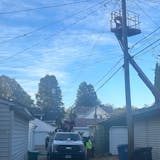It’s been a status-quo summer for home sales in the Twin Cities with sales easing — as they always do — after a robust spring, according to a midyear sales report released Tuesday.
There were 4,469 pending sales last month across the 16-county metro, 10.8% fewer than last year at this time, according to Minneapolis Area Realtors (MAR). Despite that decline, pending sales so far this year are up 1.8% over 2023.
Many would-be sellers were on the sidelines last month when there were 6,358 new property listings, 5.8% fewer than last year. New listings so far this year are up 10.6% over last year, causing a double-digit increase in the number of available houses.
Despite the June retreat, sellers are still firmly in the driver’s seat. At the current sales pace, there were enough listings on the market to last 2.4 months. The market is considered evenly balanced between buyers and sellers when there’s a four- to six-month supply of houses for sale.
“There are still supply constraints in a lot of areas,” said Kris Lindahl of Kris Lindahl Real Estate, which has offices across the metro.
Lindahl said while his agents are reporting multiple offers on listings in some parts of the metro, stiff competition is less prevalent than it has been, meaning fewer buyers are waiving finance and inspection contingencies.
“There are lot of people who don’t want to take the risk because the market is turning,” he said.
With more listings to choose from and a bit less froth, price gains in the Twin Cities have been slow and steady. In June they posted a meager gain, rising 1.8% over last year to $390,000 as home buying dipped slightly, according to a monthly MAR report. Earlier price gains this year have been in the 3% to 4% range.


